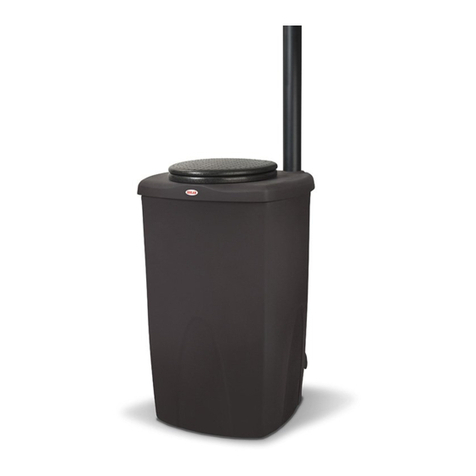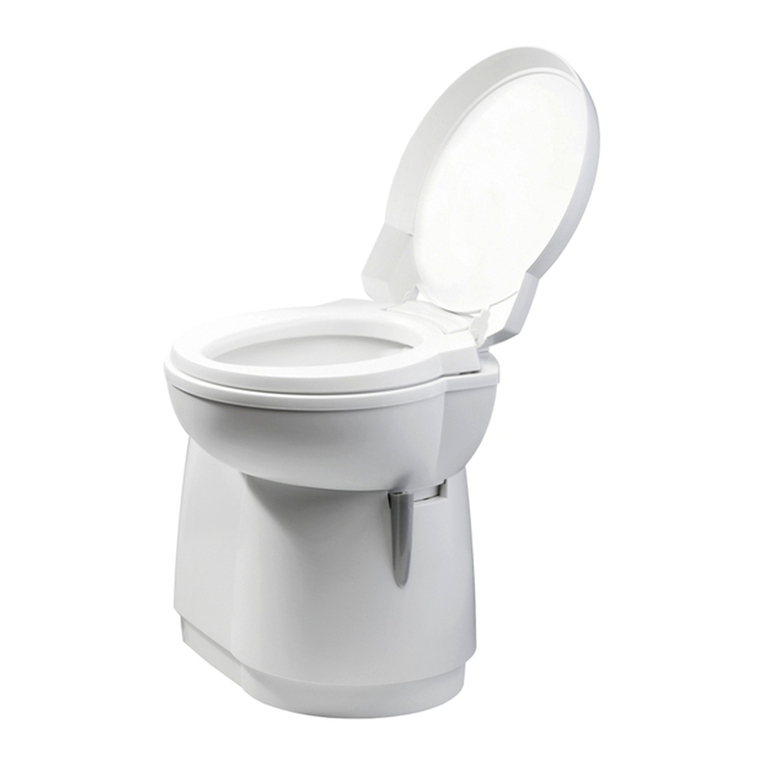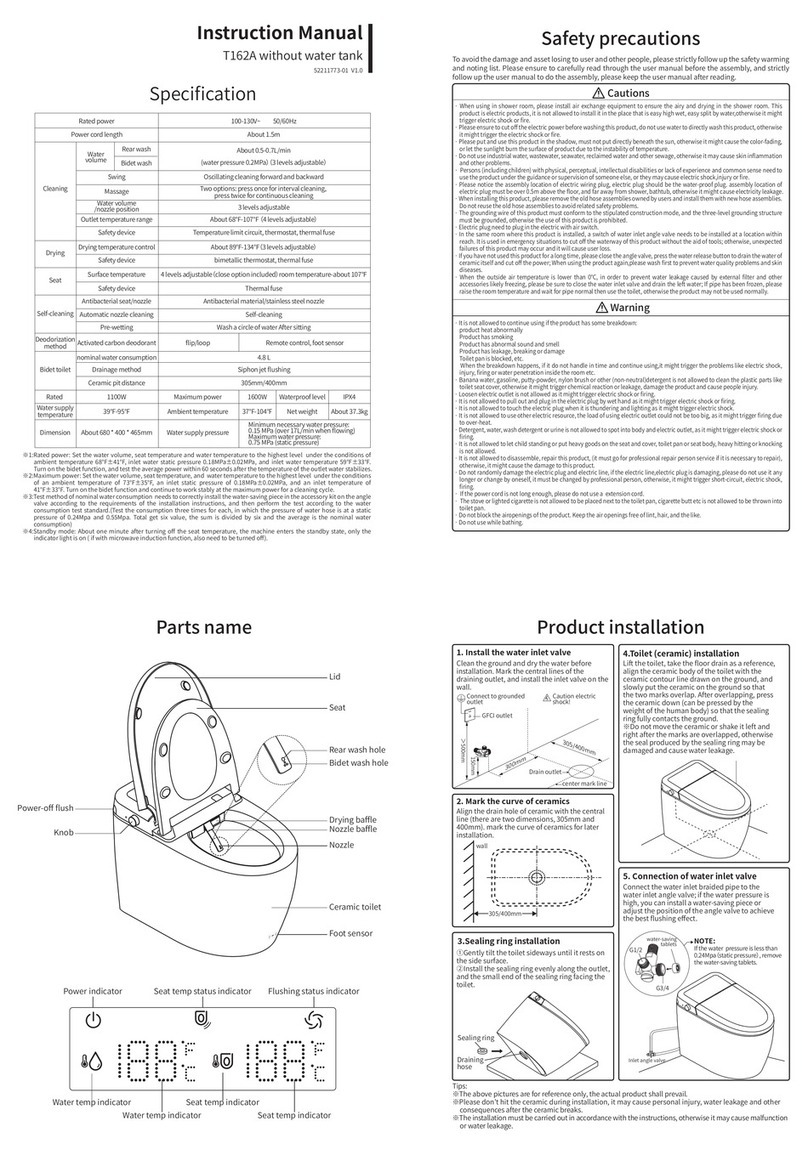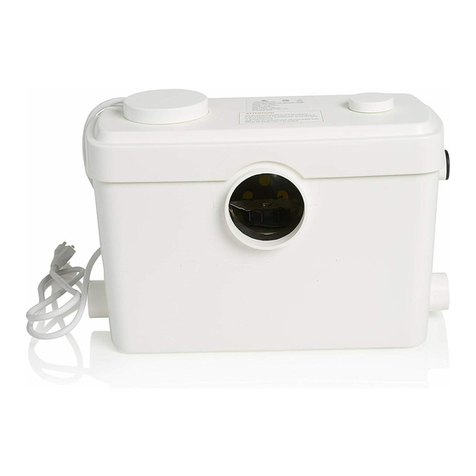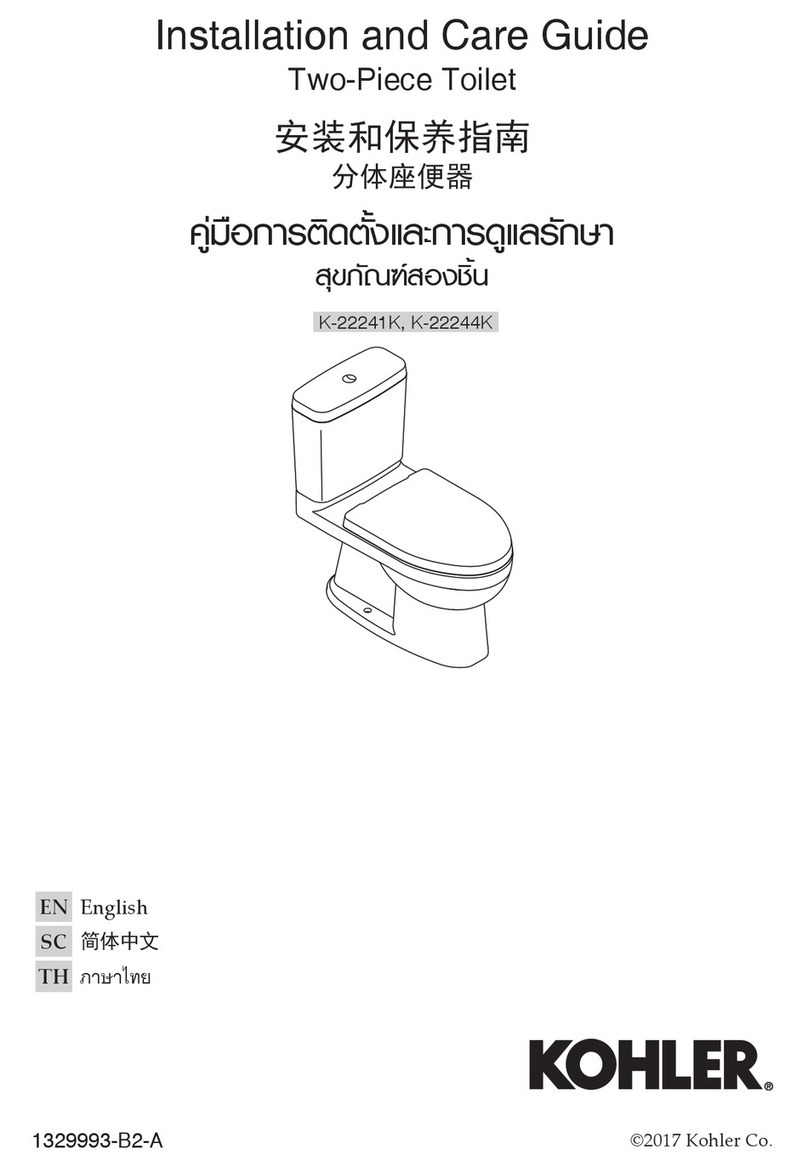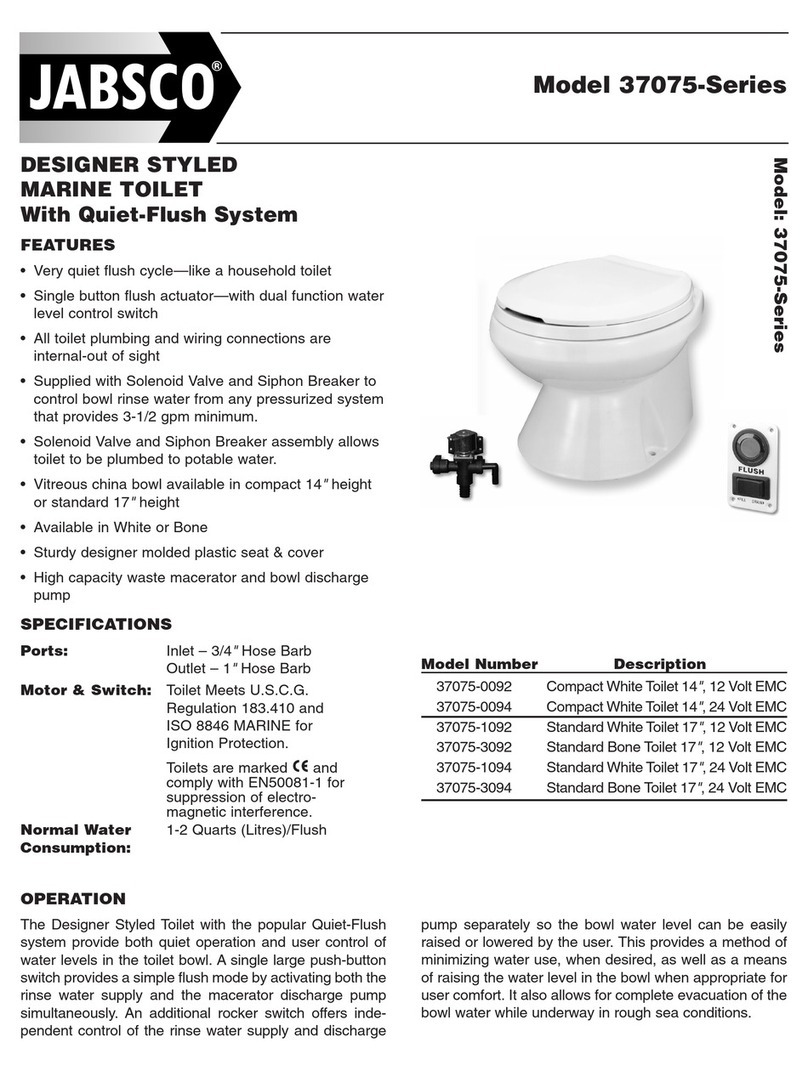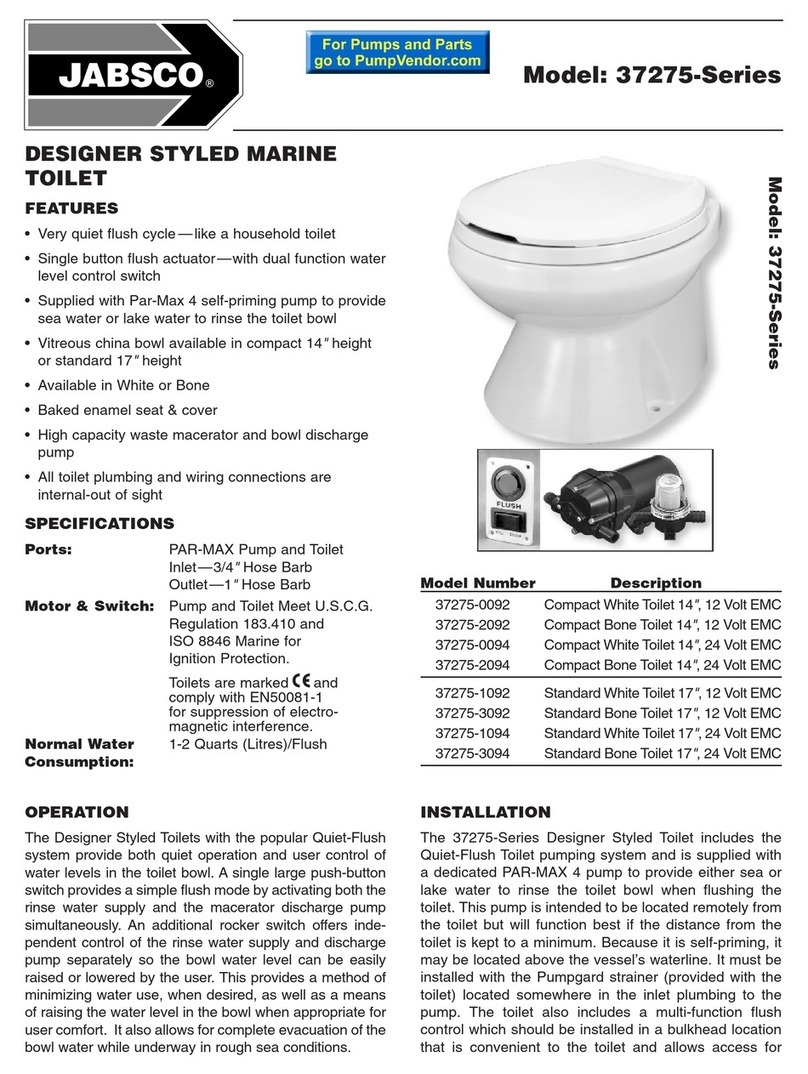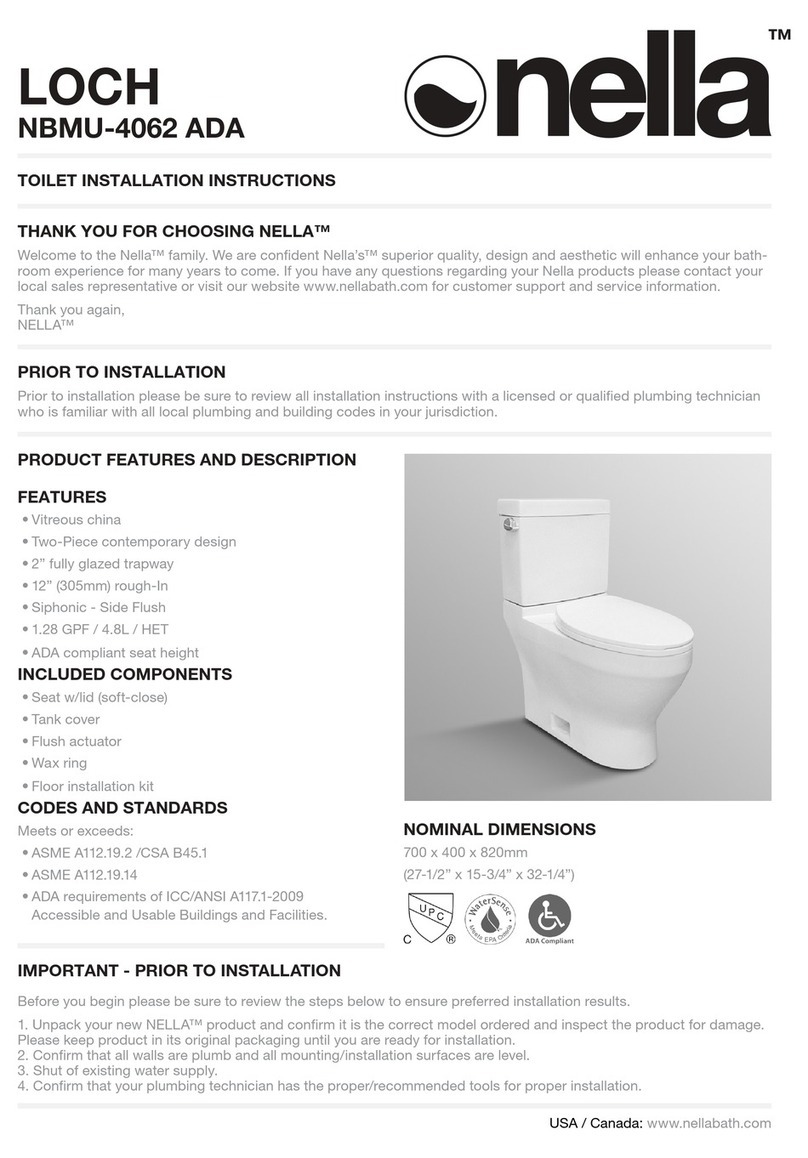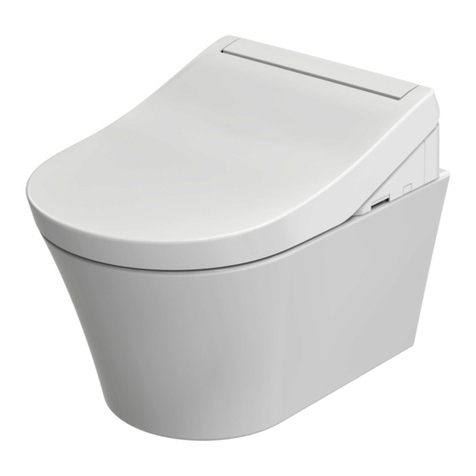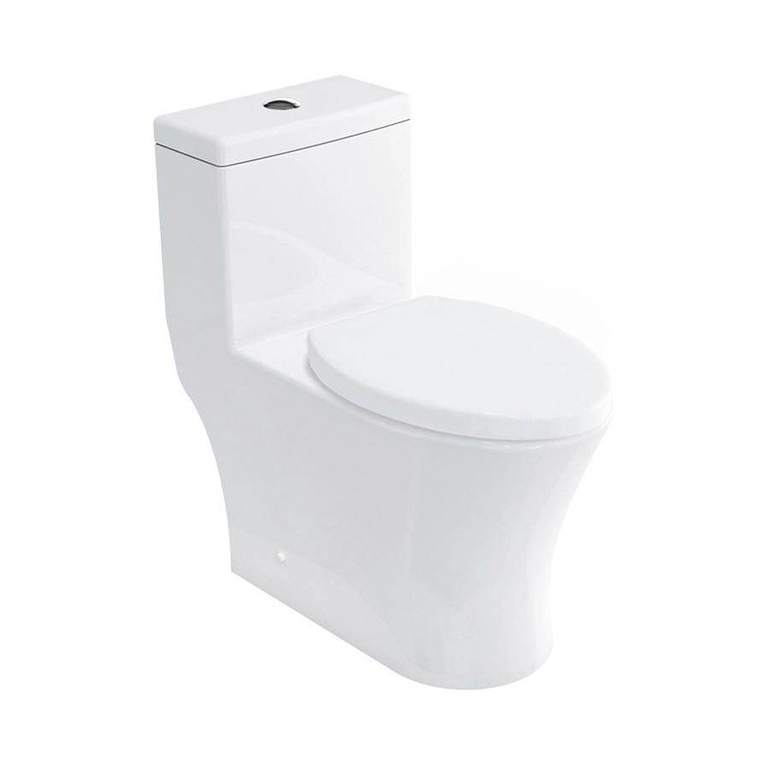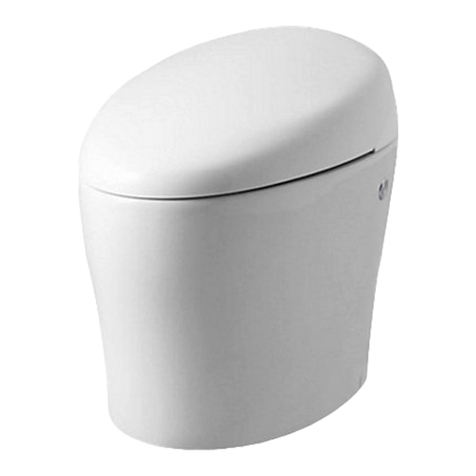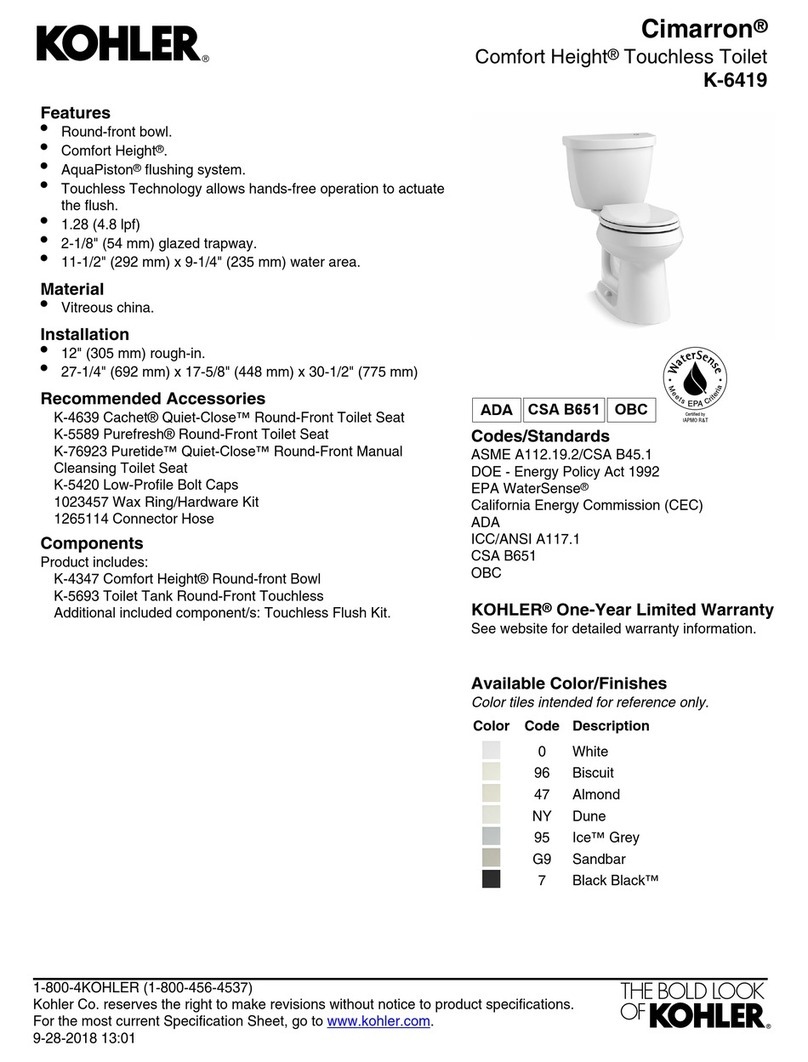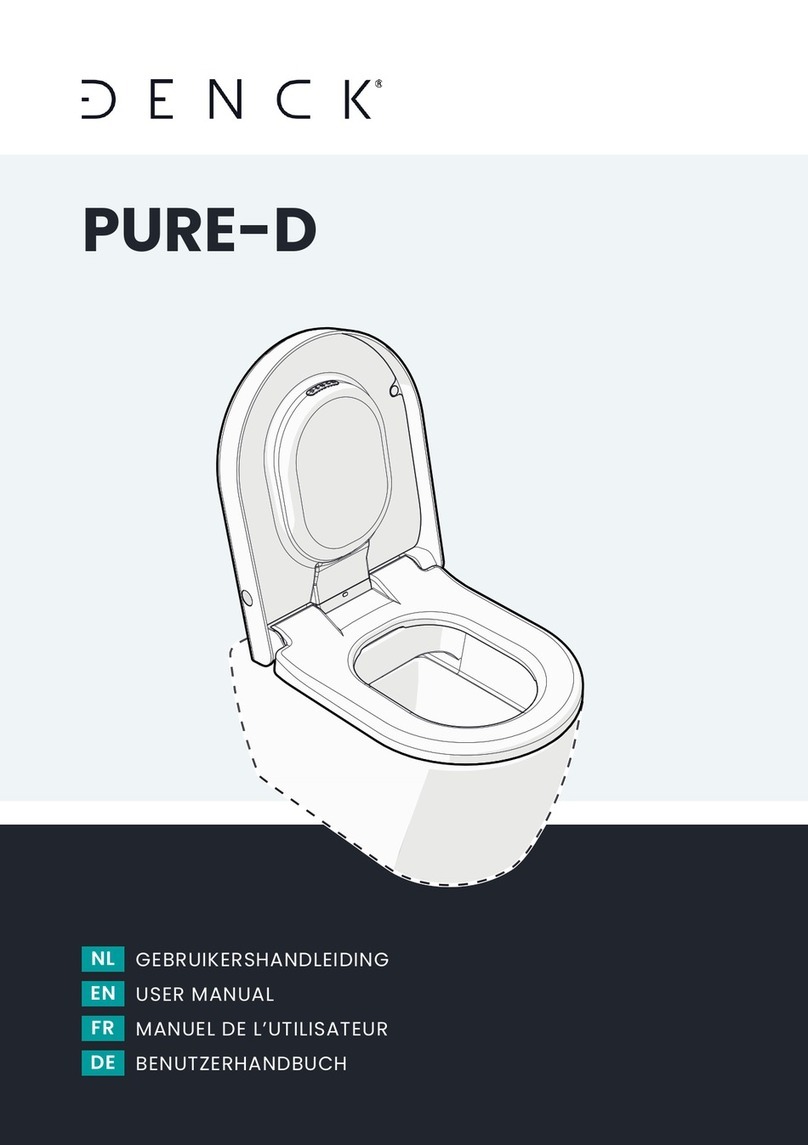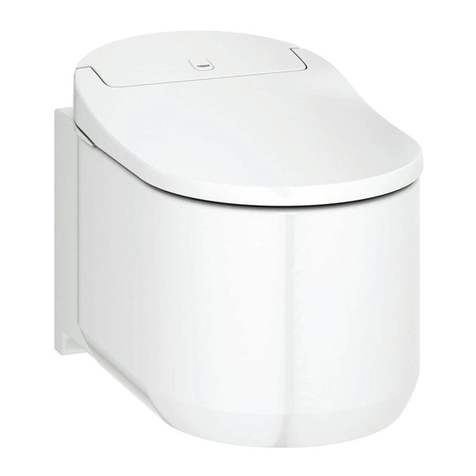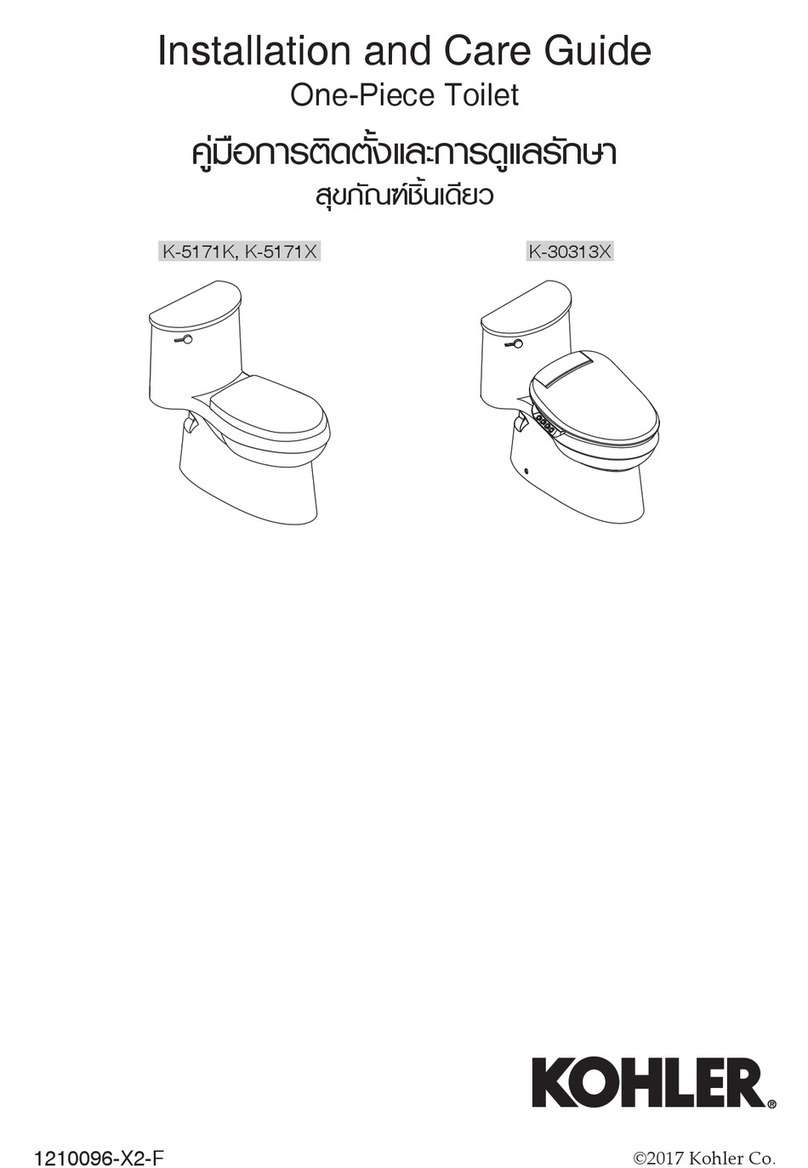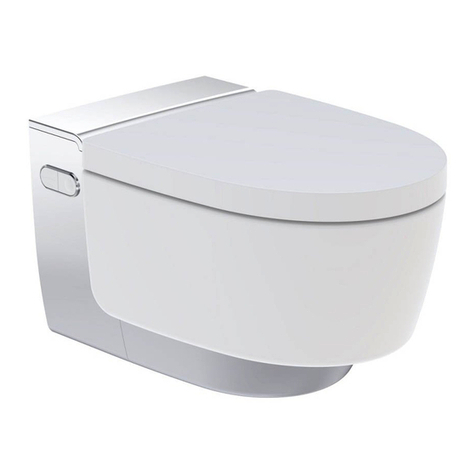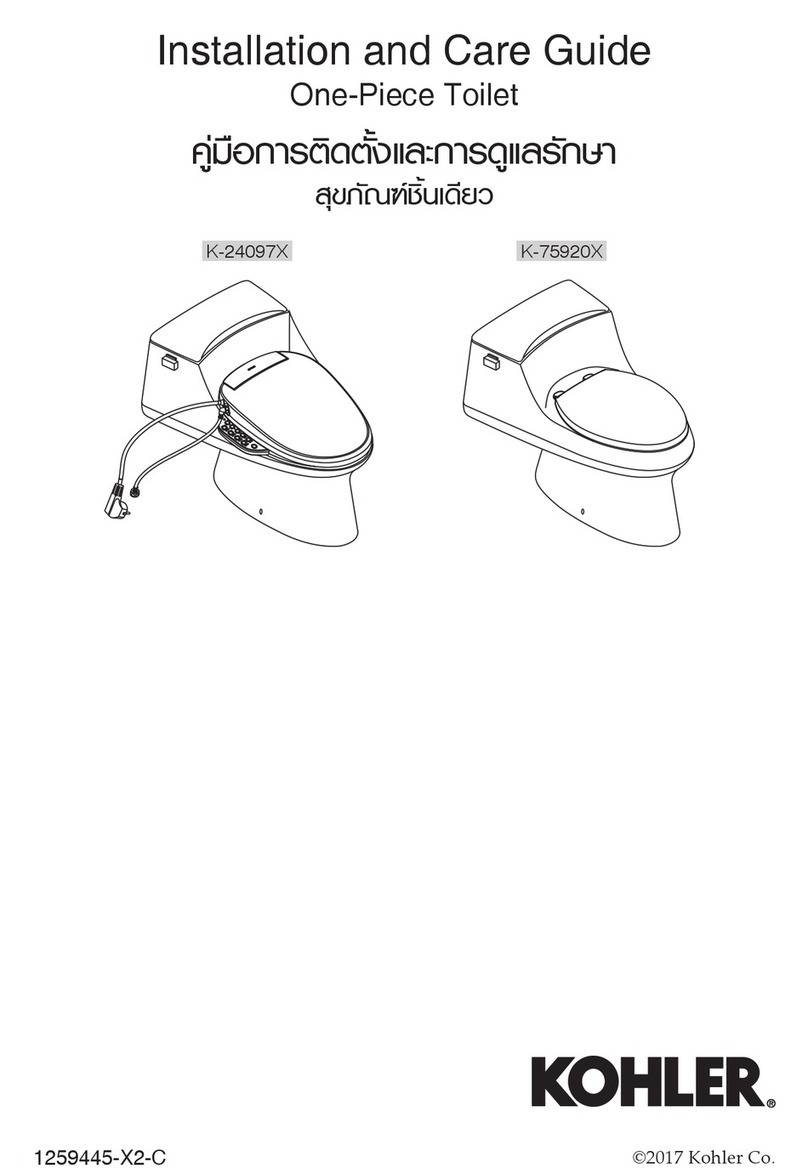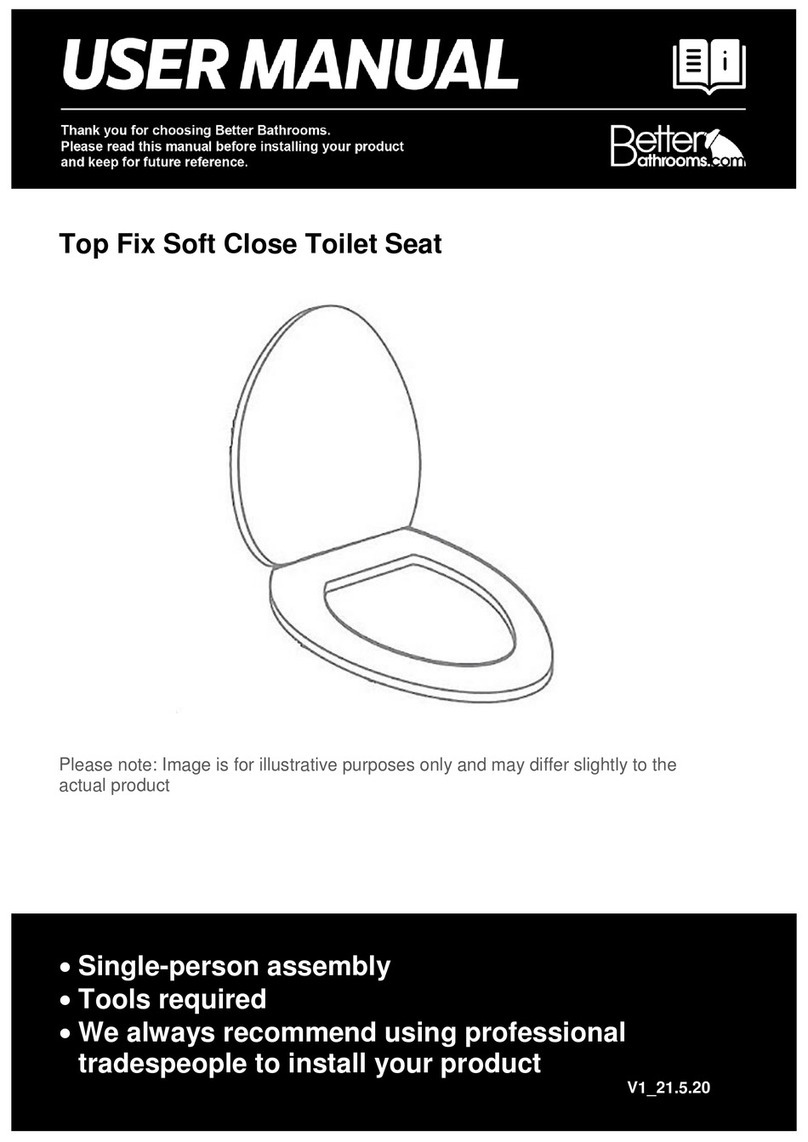in the O-ring groove on the top of the base and place the
china bowl on the base in the desired orientation relative to
the pump assembly. Place one plastic washer (to protect
the china), then one stainles steel washer on each machine
screw and attach the remaining hex nuts to secure the
bowl to the base. Cap each machine screw and nut with a
white decorative nut cap.
Position the toilet assembly in its intended installed position.
When locating the toilet, ensure there is adequate
clearance above and to the rear of the bowl so the seat
and lid assembly can rotate slightly past vertical and will
remain up when lifted. Once the exact position for the toilet
has been determined, mark the location of the three base
attachment holes on the toilet mounting surface.
Determine the best toilet attachment method using 1/4"
(6mm) fasteners (either machine screws for through
bolting or lag screws for topside atttachment) and drill the
appropriate size holes for the fasteners being used. If
securing the toilet with lag screws into a plywood
underlayment below fiberglass, be sure to drill a hole
through just the fiberglass layer large enough to allow
clearance for the screw threads and shank to avoid
cracking the fiberglass.
To make the water connection, shut off the water system
pump and open one of the systems faucets or fixtures to
drain the pressure from the system. Select an appropriate
tee type fitting that can be installed in the existing
pressurized water system and will provide a 1/2" (13mm)
hose barb to feed water to the toilet. Install the tee fitting at
a location on the pressurized water system that provides
convenient connection to the toilet’s solenoid valve/siphon
breaker assembly. If the toilet is being connected to the
vessel’s fresh water system and the vessel may be
connected to an unregulated city water supply, it is
recommended that a valve be installed in the toilet water
supply line ahead of the solenoid valve/siphon breaker to
regulate the flow rate of incoming pressurized city water.
The solenoid valve/siphon breaker should be positioned a
minimum of six inches above the hose connection at the
back of the toilet bowl (at all angles of heel and trim) and
located as close to the toilet as possible. It should be located
where an occasional drop or two of water from the siphon
breaker will not adversely affect nearby equipment or
supplies. It must be installed in a vertical position with the
hose barb connections pointing down. The solenoid
valve/siphon breaker bracket should be secured to a solid
mounting surface with four screws. If the valve assembly is
attached to a wood surface, 3/8" (10mm) long screws are
generally adequate to support the weight of the valve
assembly. If desired, the valve assembly may be installed
inside a cabinet or locker to conceal it from view of the
vessel’s occupants.To provide a clean sanitary appearance
inside the head area, a six foot section of smooth white
hose is provided with the toilet to connect the toilet bowl
spud fitting to the siphon breaker outlet hose barb.
The solenoid valve inlet hose barb is then connected with
1/2" (13mm) reinforced vinyl hose suitable for pressurized
water to the tee fitting installed in the water system line.All
pressurized water system connections should be secured
with stainless steel band type hose clamps. The 3/4"
hose connecting the siphon breaker to the bowl should be
secured with a band clamp at the siphon breaker to prevent
it from being accidentally dislodged but generally does not
need a hose clamp to secure it to the bowl spud fitting
unless desired for added security.
The discharge port includes a 1" (25mm) hose barb and
should be plumbed with 1" (25mm) hose to an on board
holding tank or, if appropriate, to an overboard discharge
through hull. A 1" (25mm) to 1-1/2" (38mm) barbed hose
adaptor is provided to adapt a 1" (25mm) discharge hose
to 1-1/2" (38mm) hose, if desired. The discharge plumbing
should be kept as short as possible and bends in the
discharge hose should be kept to a minimum. To retain
water in the bowl, the discharge hose should be looped
upward about eight to ten inches above the base of the
toilet and as near to the toilet as can be practically
accomplished without creating an unsightly plumbing
situation.
If the toilet is below the water line and is plumbed to an
overboard discharge through hull, the discharge plumbing
must include a vented loop positioned so it remains
above the water line at all angles of heel and trim. Total
discharge head should not exceed 4 feet (1.2M).
ELECTRICAL
The electrical wiring should be independent of all other
accessories. It should be made with marine grade copper
stranded wire of the gauge specified in the electrical
specifications chart. Make all wire connections with
mechanical locking type connectors (crimp type butt
connectors and terminals). Ensure the circuit is protected
by a proper sized fuse or circuit breaker determined from

